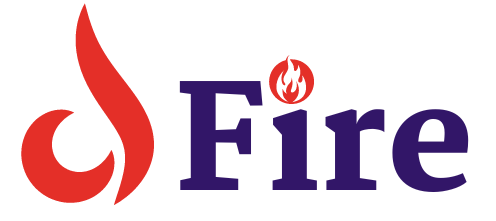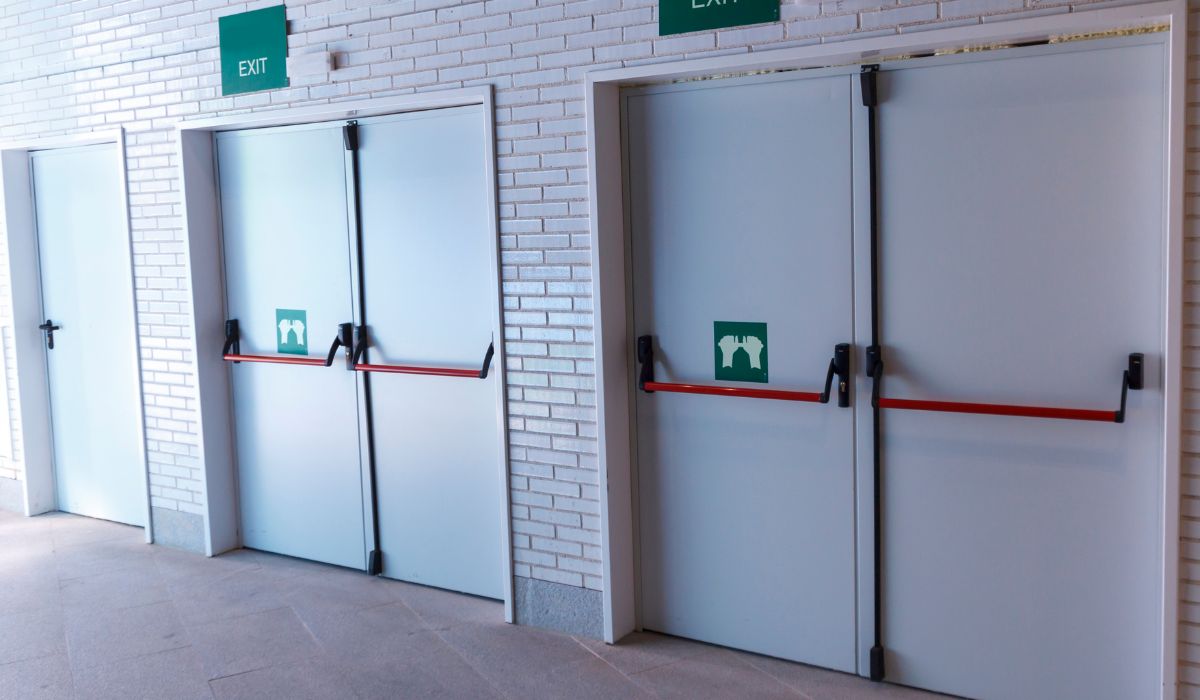Commercial fire rated doors are essential for enhancing building safety by preventing fire spread. These doors are designed to withstand fire for a specified time period, offering crucial protection in emergencies.
Ensuring the safety and security of a building’s occupants is paramount, and one key element in this safety arsenal is the installation of commercial fire rated doors. These specialized doors are engineered to resist the devastating effects of fire, providing a barrier that can help contain flames and smoke, and thus, allow more time for evacuation.
By incorporating materials that can endure extreme temperatures, these doors play a pivotal role in a building’s fire protection strategy. Their importance in commercial settings, such as offices, schools, and hospitals, cannot be overstated, as they not only safeguard human lives but also minimize property damage during a fire outbreak. Selecting the right fire rated door involves understanding the specific needs of a building and adhering to local fire safety regulations, ensuring a well-rounded approach to fire safety planning.
Introduction To Fire Rated Doors
Fire rated doors are a crucial element in building safety. They provide critical protection during a fire by slowing the spread of flames and smoke. This allows occupants time to evacuate and helps to minimize property damage.
Purpose In Commercial Buildings
In commercial settings, fire rated doors serve as a key component of a building’s passive fire protection system. They compartmentalize a fire, keeping it contained to a specific area. This not only safeguards lives but also secures assets and maintains the integrity of the building structure.
- Life safety for occupants
- Protection of property and assets
- Preservation of building integrity
Brief History
The concept of fire rated doors has evolved over time. Early attempts at fire prevention included thick wooden doors and metal coverings. With advancements in materials and technology, modern fire doors now feature fire-resistant cores and seals.
| Year | Innovation |
|---|---|
| 19th Century | Wooden doors with metal |
| 20th Century | Introduction of fire-resistant cores |
| 21st Century | Advanced sealing technology |
Basics Of Fire Rated Doors
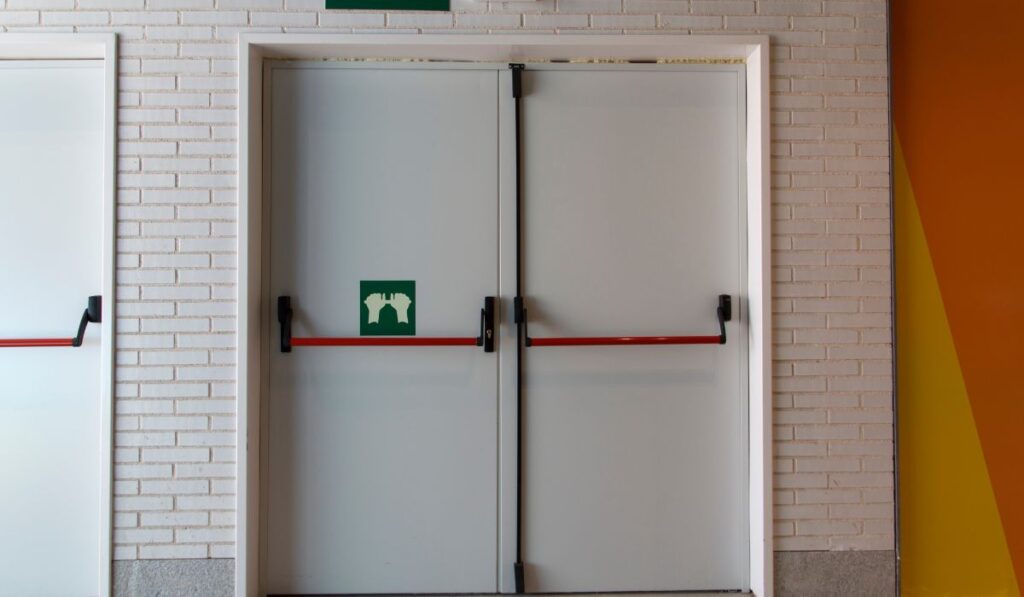
Fire rated doors are essential in any commercial building. They save lives. They stop fires from spreading. Let’s explore the basics of these doors.
Material Composition
The core materials give fire doors their power. These materials can withstand high heat. They include:
- Steel
- Solid wood
- Gypsum
- Aluminum
- VerMiculite
These materials hold back flames. They also prevent smoke from passing.
Design Standards
Fire doors must follow strict rules. These rules ensure safety. They come from recognized bodies like:
| Organization | Standard |
|---|---|
| NFPA | National Fire Protection Association |
| UL | Underwriters Laboratories |
| ASTM | American Society for Testing and Materials |
| ANSI | American National Standards Institute |
Fire rated doors must pass tests. These tests check their endurance against fire. Doors get a rating based on time. For example, 20, 45, 60, 90 minutes, or more.
Fire Ratings Explained
Understanding fire ratings for commercial doors is key. Different doors offer different levels of protection. This part will explain the fire ratings clearly.
Rating System
Fire rated doors are essential in commercial buildings. They help to contain fires and provide safe evacuation routes. The rating system for these doors measures how long a door can withstand fire. It is in minutes or hours.
- 20 minutes (1/3 hour) for corridors and room partitions.
- 45/60 minutes for doors in stairwells and other critical areas.
- 90 minutes for doors in walls that separate buildings or divide a large building into fire areas.
- 3 hours for doors in walls that are fire barriers.
Interpreting The Codes
Building codes define the requirements for fire rated doors. Each code has a series of numbers and letters. These tell the door’s capabilities.
| Code | Meaning |
|---|---|
| A | Protected by automatic sprinklers |
| B | Unprotected by sprinklers |
| C | Doors in corridors and room partitions |
| D | Doors in exterior walls exposed to fire from outside |
| E | Doors in exterior walls exposed to fire from inside |
Look for a label on the door’s edge. It tells the door’s fire rating. A label with “90” means the door can resist fire for 90 minutes.
Choose the right door for your building. It ensures safety and compliance with fire safety codes.
Importance In Safety Protocols
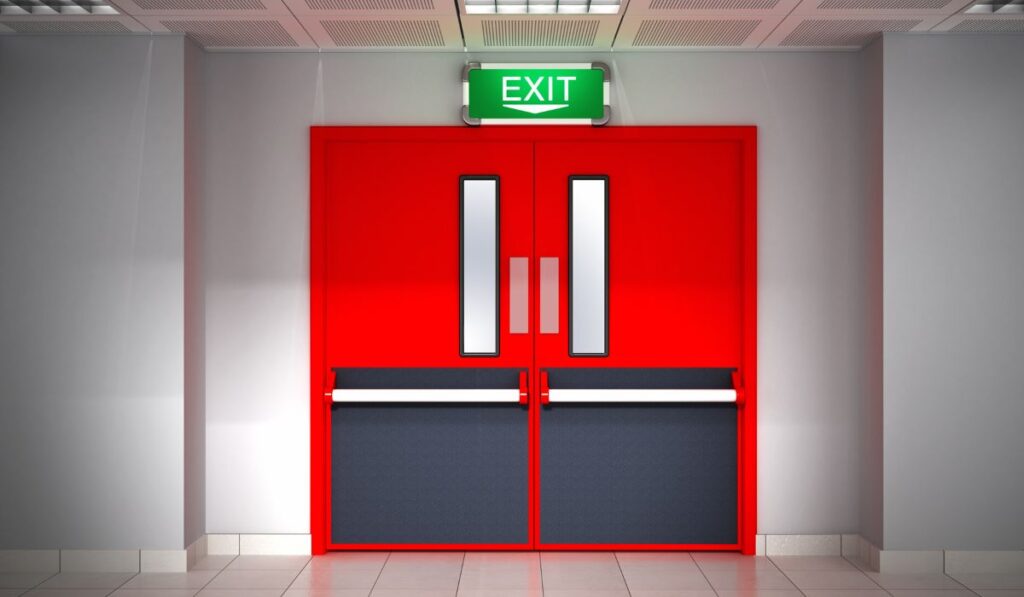
Fire rated doors play a vital role in building safety. They are essential in protecting lives and minimizing property damage during a fire. Understanding their importance in safety protocols cannot be overstated. Such doors are designed to withstand fire for a specific period, giving occupants time to escape and limiting the spread of fire and smoke.
Containment Strategies
Effective containment is crucial in a fire emergency. Fire rated doors serve as a critical component in a building’s compartmentalization. They prevent fire from spreading rapidly, allowing for a safer evacuation and response from firefighters.
- Resist fire spread
- Protect escape routes
- Buy time for rescue
Evacuation Efficiencies
During an emergency, timely evacuation saves lives. Fire rated doors help maintain clear and safe exit paths. This ensures that occupants can leave the building quickly and safely.
| Door Type | Rating | Evacuation Time |
|---|---|---|
| 20-minute | Light Hazard | Short |
| 60-minute | Moderate Hazard | Medium |
| 90-minute | High Hazard | Extended |
Each type provides occupants with critical minutes for safe exit.
Installation Best Practices
Proper installation is vital for the functionality of commercial fire rated doors. It ensures safety and compliance with fire codes. Below are best practices for installing these critical safety features.
Professional Installation
Experts should handle the installation of commercial fire rated doors. They understand the codes and materials. They also have the right tools. This ensures a secure fit and proper function. Follow these steps for professional installation:
- Choose certified professionals: Select installers with proper certifications.
- Check door ratings: Ensure the door’s fire rating matches the requirement.
- Frame and hardware inspection: Professionals will examine these parts for compatibility.
- Seal gaps correctly: Installers will use intumescent seals to prevent smoke passage.
- Test functionality: Doors must open, close, and latch without issues.
Diy Considerations
DIY installation can be risky for fire rated doors. But if attempted, follow these guidelines:
- Understand the manual: Read the installation guide thoroughly.
- Gather tools: Prepare all necessary tools before starting.
- Measure accurately: Double-check all measurements for a perfect fit.
- Seek help: Ask someone to assist with the heavy lifting and positioning.
- Consult codes: Review local fire codes to ensure compliance.
Remember, DIY installation may void the door’s warranty. It may also compromise safety. Always consider hiring a professional.
Maintenance And Upkeep
Maintenance and upkeep are crucial for commercial fire rated doors. Proper care ensures doors function properly during emergencies. It also extends their lifespan. Let’s dive into the essentials of keeping fire rated doors in top condition.
Regular Checks
Regular inspections are a must. They keep doors ready for unexpected events. A monthly schedule works best. Look for signs of damage or obstruction. Check that door seals are intact. Verify that doors close fully without hindrance.
- Inspect door hinges for smooth operation.
- Ensure door closers are working effectively.
- Test fire exit hardware for reliability.
- Examine the door frame for structural integrity.
Wear And Tear Management
Fire rated doors face daily use. This leads to wear and tear. Addressing minor issues promptly can prevent major repairs later. Replace worn parts immediately. This maintains door functionality.
| Component | Check for | Action |
|---|---|---|
| Hinges | Looseness, rust | Tighten or replace |
| Seals | Cracks, gaps | Reapply or replace |
| Closers | Fluid leaks, slow closing | Repair or replace |
| Locks | Difficulty in locking | Lubricate or replace |
Keep a log of all maintenance activities. This helps track door history. It also proves compliance with safety standards. Remember, well-maintained doors save lives.
Regulatory Compliance
Regulatory Compliance ensures safety in commercial spaces. It mandates that buildings use proper fire-rated doors. These doors must meet specific codes. Such codes protect against fire hazards.
Local Vs Federal Standards
Local and federal standards often differ. Local codes adapt to specific area needs. Federal standards provide broad safety measures. All commercial buildings must follow both.
- Local Standards: Focus on community-specific risks
- Federal Standards: Align with national safety goals
Certification Processes
Certification ensures doors resist fire. It involves rigorous testing. Certified doors get a label. This label shows fire-rating classification.
- Submit door for testing
- Door undergoes exposure to heat
- Receive fire-rating label upon passing
Case Studies
Exploring case studies gives insights into the real-world impact of commercial fire rated doors. These stories highlight their importance, showcasing how they protect lives and property during emergencies. The following sections delve into success stories and lessons learned, offering valuable takeaways for businesses considering fire rated doors.
Success Stories
- Shopping Mall Evacuation: A fire at a large shopping center was contained, thanks to fire rated doors, allowing safe evacuation.
- Hospital Fire Safety: In a city hospital, fire doors prevented the spread of smoke, ensuring patient safety during a fire.
Lessons Learned
Maintenance is Key: Regular checks are crucial for door functionality.
Training Matters: Staff must know how to use fire doors properly.
Advancements In Fire Rated Door Technology
Fire rated doors are crucial for safety in commercial buildings. They help contain fires, allowing safe evacuation. Recent advancements have improved their effectiveness significantly.
Innovations
New materials now enhance fire doors’ strength. These include non-combustible cores and heat-resistant glass.
Intumescent seals expand in heat. They seal the gap between door and frame. This stops smoke and flames.
Advanced locking mechanisms also contribute. They ensure doors stay closed during a fire. This is vital for containment.
Smart technology integration is another leap. Fire doors can now connect to building management systems. They alert when compromised.
Future Trends
- Expect smarter fire doors with IoT capabilities. They will self-diagnose issues for maintenance.
- Automated closing systems will become standard. They will respond to fire alarms without human intervention.
- Manufacturers will focus on eco-friendly materials. These will offer fire protection with a lower environmental impact.
- Customizable designs will rise. These will allow fire doors to blend seamlessly with interior aesthetics.
Choosing The Right Fire Rated Door
Choosing the right fire rated door is crucial for safety. It helps prevent fire spread. This guide helps you pick the best one.
Factors To Consider
Fire rating is key. It shows how long a door can resist fire. Doors have ratings like 20, 45, 60, 90, and 180 minutes. Pick one based on your building’s needs.
Material matters too. Common materials are metal, wood, and glass. Metal doors offer the best protection.
Size and style should fit your space. Make sure it matches your building’s look.
Installation is important. A well-installed door works best. Use a professional for this.
- Check fire rating
- Choose the right material
- Consider size and style
- Ensure professional installation
Vendor Assessment
Picking the right vendor is crucial. Look for experience and reputation. They should offer high-quality doors and good service.
Ask questions about their doors. Learn about fire ratings, materials, and prices.
Read reviews to know what others think. Happy customers mean good service.
Compare prices but remember, safety comes first. Don’t pick based only on price.
| Criteria | What to Look For |
|---|---|
| Experience | Years in business, past projects |
| Reputation | Customer reviews, ratings |
| Quality | Fire rating, material, certification |
| Service | Installation, maintenance, warranty |
Remember, quality and safety are most important. Choose wisely.
Common Myths Debunked
Today, let’s tackle some common myths about Commercial Fire Rated Doors. Many people hold false beliefs about these doors. It’s time to clear the air and separate fact from fiction. This discussion aims to help everyone understand the truth and importance of fire-rated doors in commercial settings.
Misconceptions
- All fire doors look boring. Many think they can’t be stylish.
- They are all the same. Some believe one type fits all needs.
- Only necessary in industrial areas. A common myth is they’re not needed in offices or retail spaces.
- Expensive to maintain. People often think they cost a lot to keep up.
Realities
| Myth | Reality |
|---|---|
| Fire doors look boring | They come in many styles and finishes. |
| All are the same | Doors are tailored for different fire ratings and uses. |
| Only for industrial areas | Essential for safety in all commercial spaces. |
| Expensive to maintain | Regular checks ensure longevity, not costly. |
Understanding the realities helps in making informed decisions. Fire-rated doors are crucial for safety. They save lives and protect property. Don’t let myths stop you from choosing the right door for your needs.

Credit: www.trudoor.com
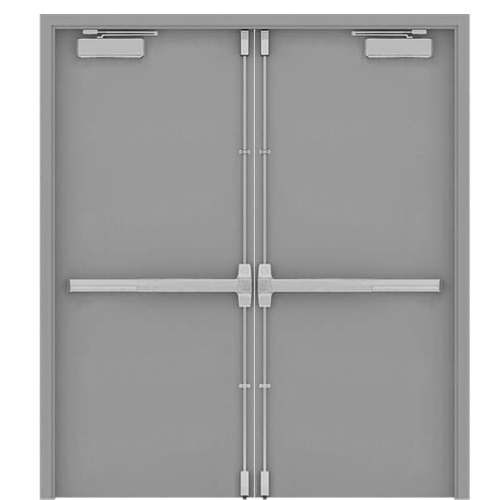
Credit: www.manorind.com
Frequently Asked Questions
What Is A Commercial Fire Door?
A commercial fire door is a safety feature designed to prevent the spread of fire and smoke within a building. It helps protect escape routes and secures compartments by automatically closing in the event of a fire, ensuring compliance with safety regulations.
Which Doors Should Be Fire Doors Commercial?
All commercial buildings must equip exit pathways, rooms with hazardous materials, and high occupancy areas with fire doors for safety.
How Do You Tell If A Commercial Door Is Fire Rated?
Check for a label or metal tag on the door’s hinge side indicating the fire rating. Look for certification marks from testing organizations like UL or Intertek. These tags or labels usually detail the door’s fire-resistance duration, ranging from 20 minutes to 3 hours.
Can You Get A 2 Hour Fire Rated Wood Door?
Yes, 2-hour fire-rated wood doors are available and meet strict safety standards for fire resistance in buildings.
What Are Commercial Fire Rated Doors?
Commercial fire rated doors are specially constructed barriers that prevent the spread of fire and smoke for a specified period, typically ranging from 20 minutes to 3 hours.
Why Install Fire Rated Doors?
Fire rated doors are installed to enhance building safety by compartmentalizing fire, giving occupants more time to evacuate and reducing property damage.
Conclusion
Selecting the right commercial fire-rated doors is crucial for any business. These doors ensure safety and compliance, while also offering peace of mind. Remember, quality and certification matter in protecting assets and lives. Invest wisely in fire-rated doors to enhance your building’s security.
Safety isn’t expensive, it’s priceless.

I’m Abdus Sobur, a highly skilled and professional Fire Safety Officer with a passion for safeguarding lives and property. Over the course of my career, I’ve conducted numerous successful fire safety audits, earning a reputation for excellence in ensuring public safety.
In addition to my role as a Fire Safety Officer, I’m also dedicated to raising awareness about the importance of fire safety. Through my blog, I share insights into the functions of different fire safety equipment, aiming to empower individuals with the knowledge they need to protect themselves and their communities.
I’m driven by a deep commitment to promoting fire safety awareness and preventing fire-related incidents.
